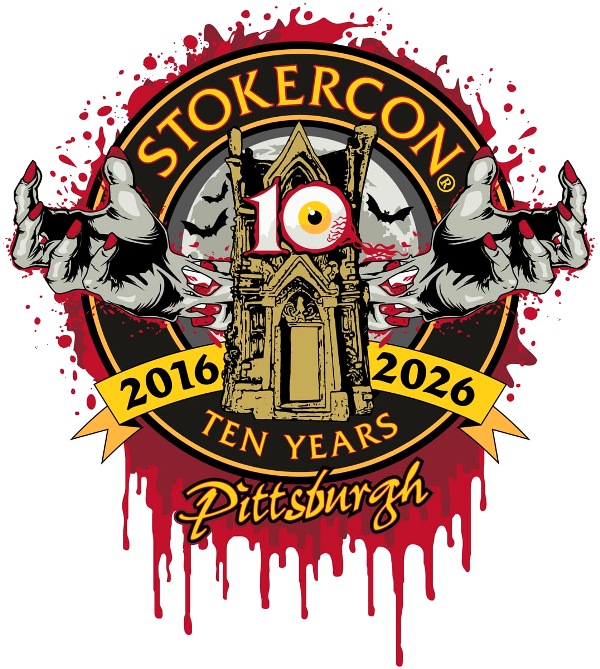
The Horror Writers Association is pleased to announce StokerCon 2026 which will be StokerCon 10.
This is a milestone for us to celebrate an occasion to look back on the history of the convention and how it has grown and flourished through the decade. It is also a moment to think ahead and look to 2027 where we recognize 40 years of the HWA. So taking a page from our history and the years before StokerCon, we will be inviting you to join us in the same location for both 2026 and 2027 – a place that is dedicated to preserving the history of our organization and genre and welcome you back to Pittsburgh!
We are excited to embrace the theme of recognizing our history while also using the stability of one location and the planning process to explore ways to grow and change the best celebration of the genre we love.
We are celebrating TEN YEARS and will be back in Pittsburgh from 2026 to 2027 at the same hotel for both years.
The event will be at the Westin Pittsburgh from June 4th to June 7th.
Guests of Honor:
Linda D. Addison
Ann VanderMeer
John Shirley
Billy Martin
James Tynion
Rachel Harrison
All those who purchase the Stamford Special ticket will receive a special commemorative item with their ticket!
To purcahse StokerCon tickets - click here.
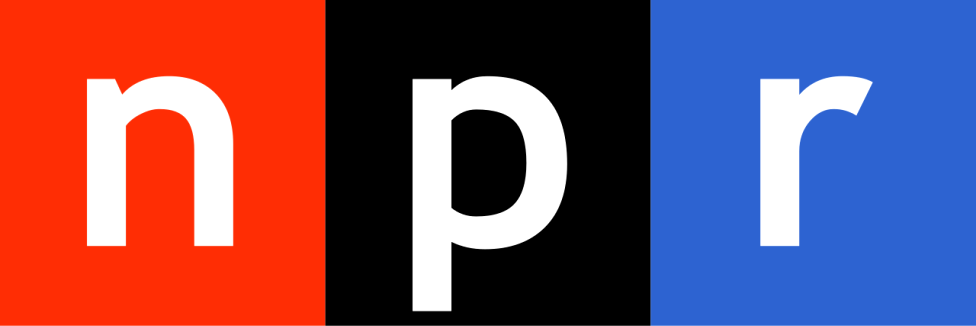
WHICH HORROR MOVIES WILL BE IN THE RUNNING FOR THE AWARDS SEASON?
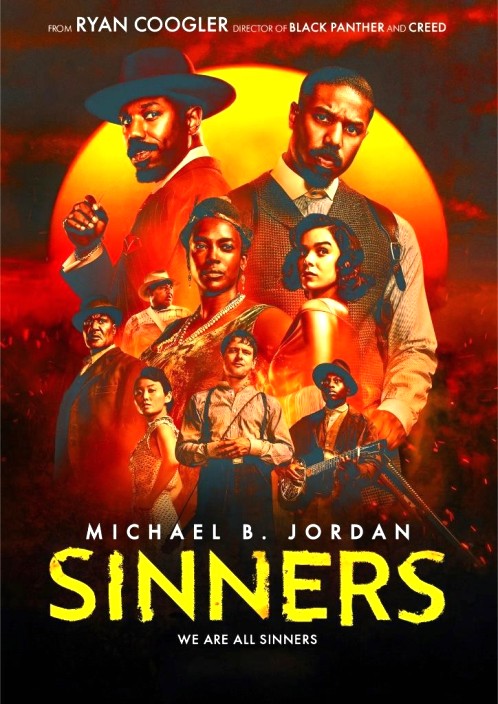 
From 'Sinners' to 'The Conjuring', a look at 2025's horror hits and critical darlings
by A Martínez and Glen Weldon
Horror films played well at the box office and with critics in 2025 — in particular, "Sinners" and "Weapons." We revisit the genre's biggest hits and most acclaimed standouts.
A MARTÍNEZ, BYLINE: These days, it seems like there's always a terrifying movie raking in cash at the theaters. Right now, it's a sequel to "Five Nights At Freddy's" about killer animatronics at a pizza restaurant.
Before that, it was a sequel to "The Conjuring" franchise. Then there was "Weapons" and this year's top-grossing horror movie, "Sinners." Scary movies have been a growing share of the box office in recent years. So Glen Weldon is here to talk about this year's standouts. He's co-host of NPR's Pop Culture Happy Hour podcast. Hey, Glen. So an observation here. I mean, horror hits seem to be split into a couple of major categories - the big franchises, and then the original stories. So were you surprised that original titles such as "Sinners" and "Weapons" did so well this year?
GLEN WELDON, BYLINE: Yeah, pleasantly surprised, actually. So studios are really nervous right now, and they're reluctant to spend money. So they spend money on franchises, which get butts and seats. That's why they're franchises. So it's great to see them taking a risk on stories like "Sinners" and "Weapons." But to be fair, those directors, Ryan Coogler and Zach Cregger, they've both made hits before - that loosens the purse strings - but they also bring a more personal, more idiosyncratic vision to their stuff than the franchises can or do, and it's always nice to be reassured that that can still happen.
MARTÍNEZ: So we're heading into a Hollywood award season. The Oscars historically have not been very keen on handing out prizes to scary movies. So do you think that might change this time around?
WELDON: ...But both "Sinners" and "Weapons" have a serious shot. I mean, "Sinners" has the potential to make history, too, if Coogler wins for direction because it's 2025 and no Black filmmaker has won in that category ever before. But Coogler famously declined an invitation to join the academy back in 2016, so who knows how that's going to factor into things? Depends on how petty, you know, how affronted the academy of voters are feeling in the moment. But I certainly hope Amy Madigan gets nominated for "Weapons" because she plays Aunt Gladys in that movie. That's a character that doesn't really show up until a good way into the film. But when she does, man, she bends the movie around her. She's out here making choices, and big swings like hers should be rewarded, I think.
MARTÍNEZ: Yeah, quite different from her role in "Field Of Dreams" back a long time ago, yeah. OK, now, you got your finger on the pulse of creepy titles. So what scary movies would you recommend from this year that maybe haven't gotten their due?
WELDON: I mean, I see a lot of movies, right? That's my job. So I was - like the ones that play with the format, tweak expectations. Three of my favorite examples of that this year told stories from different perspectives. "Dust Bunny" is in theaters now. That's told from the perspective of a young girl who hires a hitman to kill the monster living under her bed. I'd say that one's more dark and whimsical than really scary, but it's got a great look, and it's got Sigourney Weaver, and that's all I need, man. "Presence" is a Steven Soderbergh film that's about a haunted house, but it's told from the perspective of the ghost who's doing the haunting.
But the one that I cannot shake is called "Good Boy." This is a tiny independent film told from the perspective of a dog, a very nervous dog whose owner takes him to live in a house in the woods, and he starts seeing things his owner doesn't. That hit me because I live in a house in the woods, and I have a dog, and he is constantly just, you know, staring into the corner of the room for no reason or running to the window at night to bark at nothing or what I hope is nothing. This is a moody film. It's creepy. I'm a sucker for the performance of this dog, man. He's named Indy. It's such a great, soulful performance. He may not get an Oscar for it, but I hope he gets all the scritches he wants 'cause he deserves it.

FIVE INTERESTING THINGS YOU DIDN'T KNOW ABOUT THE MOVIE SINNERS
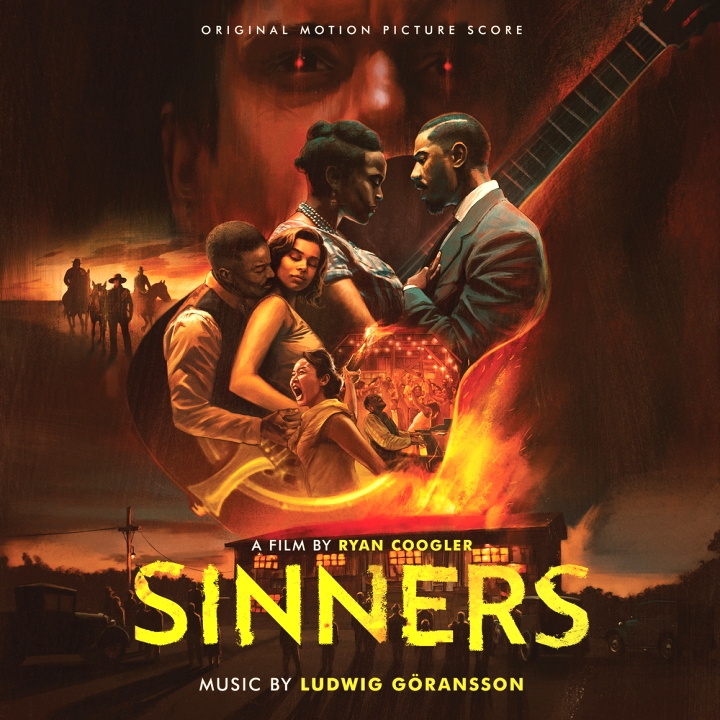
1. Michael B. Jordan enlisted real-life twins as consultants for the film.
Michael B. Jordan portrays twin brothers, Elijah ("Smoke") and Elias ("Stack"), in Sinners. To authentically capture the nuances of twin dynamics, Coogler enlisted real-life twin filmmakers Logan and Noah Miller as consultants. They guided Jordan in understanding the unique bond and subtle distinctions between twins, ensuring a portrayal that was both genuine and distinct.
"We had twin consultants on this movie," Michael said during a press stop, per Mama's Geeky. "Two friends of mine that are actually filmmakers as well, Logan and Noah Miller, who I know from Northern California. They were able to consult and work with Mike on the mindset of sharing a womb with somebody and growing up with them and how unique of a dynamic that is. But at the same time, not making it a caricature. The differences between these two guys are slight, but they are there.
The film is so much fun. What we are dealing with in the film is a lot of archetypal characters. These are identical twins, but they are also that concept of twins. Every neighborhood where I was from coming up, if you said, 'Hey, man, where are the twins at?' They would have these guys, and they’re kind of notorious local celebrities. So it was an exploration of that. It’s unique in that they are identical twins, but they are two different people. It’s not as simple as two sides of the same coin in that there’s a dynamic that exists with identical twins that’s known."
2. To ensure a respectful and accurate portrayal of Hoodoo — a spiritual tradition rooted in African-American culture — Ryan and his wife/producing partner, Zinzi Coogler, enlisted Dr. Yvonne Chireau as a consultant.
Dr. Chireau, a professor of religion at Swarthmore College and author of Black Magic: Religion and the African American Conjuring Tradition, guided the film set in depicting Hoodoo, not as superstition but as a vital cultural legacy intertwined with the film's themes of ancestral reverence and healing.
“I give all the credit to [Ryan] Coogler and Zinzi. They were very clear that they wanted a true and authentic presentation of this religion because of the kinds of things that we see in Hollywood,” Dr. Yvonne told Teen Vogue, referring to the demonization of the spiritual practice in pop culture, as well as the sensationalization of Voodoo.
“The strongest aspect of Hoodoo, I would argue, is that it is a tradition of healing. Hoodoo isn't just practice, but thought. Hoodoo for enslaved people, [which] carried after slavery, was the means of healing relationships. Between lovers and families, like we see with Annie and Smoke, but also relationships between the living and the dead. This is paramount to Black American people, because the chain between the living and the dead from Africa to America was severed during the Middle Passage.”
3. This was Miles Caton's feature film debut.
"What's incredible about this young man, from our first days on set, I had so much confidence in him, that was kind of inexplicable," Ryan said. " I'd be arranging my shots and I would say, 'I think Miles could probably get this in two takes. And looking back in hindsight, it was like, 'Man, this dude's never been in a movie before, but I had all this faith.'"
"[Miles] mentioned Beth McGuire, who’s an acting teacher at Yale University and a dialect coach. She's taught Lupita Nyong'o, Winston Duke, and has worked with Danai Gurira, Yahya Abdul-Mateen — all these actors who have come out of Yale, Beth has taught. So, he had one of the best acting teachers and dialect coaches at his disposal. From the first day that she worked with him, she came to me and said, 'Hey, this man has got it! This kid has IT!' She's not talking about singing, she's talking about acting. He just blew us all away every day."
4. There was a hidden meaning behind Smoke and Stack's attire, particularly the decision for one twin to wear blue while the other wore red.
Stack: "Stack’s suit had three little buttons down the front," Ruth told Harper's Bazaar. "It had a 1920s cut, and knowing they were coming from Chicago, we figured they likely had custom suits done. His character is very self-conscious and [plans] every little detail; on his pants, the pockets are slanted, he’s got the collar bar, the tie bar, the cuff links—he’s got everything. I remember flying back to L.A. to look for things because in New Orleans, some things you can find, some you can’t. I wanted to find Stack’s hat, and I walked into this hat shop on Melrose, and there was this red hat that ended up being perfect. I’ve worked with a lot of hat aficionados, and I know you can’t just throw your hat around or leave it anywhere, so we had these leather cases made just to hold his hat because it had to stay perfect the whole time."
Smoke: "Smoke is less conscious. He doesn’t have a tie, he represents the everyman, and his suit was a little more boxy, a little bigger, and a little less tailored because he’s hiding all kinds of stuff; he’s got two guns, he’s got a knife. His look reminds me of Don Cheadle in Devil in a Blue Dress. He’ll take you down in a second. I loved his blue hat, too, because it was made of denim and was meant to represent workwear. We really did this movie so fast; there are little things that if I could just take a magic paintbrush and be at the theater and tell the projectionist [to change, I’d be like], 'Hold on! Can you pause right here? I have to add a little bit of age to the hat!' But I love the juxtaposition of the red and blue [tones] with Smoke and Stack. That was Ryan’s idea."
5. Using an Irish vampire was not random.
"I'm obsessed with Irish folk music," Ryan told IndieWire. "My kids are obsessed with it. My first name is Irish. I think it's not known how much crossover there is between African-American culture and Irish culture, and how much that stuff is loved in our community. It was important that our vampire — our master vampire — in this movie was unique and as specific as the situation was. It was important to me that he was old, but, also, that he came from a time that pre-existed these racial definitions, so that he would be extremely odd, and that it would all seem odd to him. He would see it for what it was, and he would offer a sweet deal...if that makes sense. And that the music was just as beautiful."
See more HERE
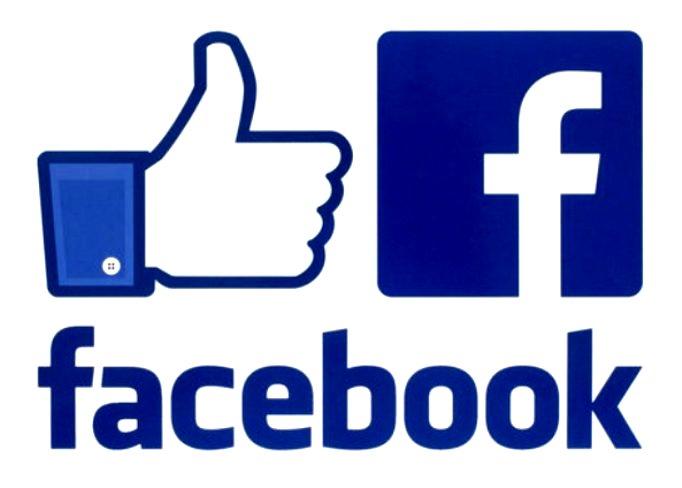
Jeani Rector queried folks on facebook (probably you!) to ask what their favorite horror movies of all time were. Below are the top 20 picks, in order according to the amount of votes they each received.
Also listed is trivia about each film.
The number ONE movie chosen by the most votes
THE THING (1982)
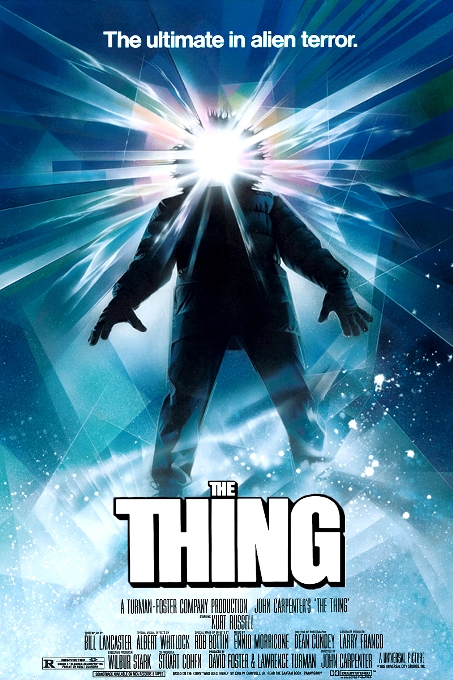
John Carpenter's The Thing didn’t go over well when it was released in 1982. Ignored by movie-goers, it was a box office failure. Reviled by critics, it even saw Carpenter being labeled a pornographer of violence by some reviewers. It was such a disappointment for the studio, they took another project away from Carpenter as punishment. But it gradually found its audience, building up a cult following. And soon, a legion of fans and critics alike began calling it one of the greatest horror movies ever made. It didn’t take long for The Thing to go from being known as reprehensible trash to being considered an all-time classic.
Actor Kurt Russell would take drags off of cigarettes to make his breath visible as though he were in cold temperatures. It has become a tradition in British Antarctic research stations to watch The Thing as part of their Midwinter feast and celebration held every June 21.
TWO
HALLOWEEN (1978)

The 1978 horror film Halloween was not an immediate success, but it eventually became one of the most successful independent films of all time. The movie, directed by John Carpenter and shot in Southern California on a budget of $325,000, had disappointing sales numbers during its first weekend. However, word of mouth helped the film gain popularity, with audiences telling their friends to see it. By the following weekend, sales had doubled, then tripled, and eventually increased tenfold.
Because of the film's tight budget, the production designer Tommy Lee Wallace had to use whatever he had at his disposal, or had to buy materials cheaply. When he created the Michael Myers mask, he made two versions. The first was an Emmett Kelly smiling clown mask that they put frizzy red hair on. They tested it out but it didn't achieve the desired effect. The other mask was a 1975 Captain James T. Kirk mask that was purchased in a costume shop on Hollywood Boulevard for $1.98. It had the eyebrows and sideburns ripped off, the face was painted bluish white, the hair was spray painted brown, and the eyes were opened up more. After testing out the mask, the crew decided that it was much more creepy because it was emotionless.
THREE
JAWS (1975)

Jaws, the American suspense and horror film of 1975, was directed by Steven Spielberg and is considered the first summer blockbuster ever due to the fact that over 67 million people in the USA went to see this film when it was first released. Based on the 1974 novel of the same name by author Peter Benchley, the film not only broke box office records at the time of its release, but also changed the way Hollywood marketed and distributed films, especially those released during the summer.
Peter Benchley himself can be seen in a cameo in the film as the news reporter who addresses the camera on the beach. Benchley had previously worked as a news reporter for The Washington Post before penning Jaws. Steven Spielberg also makes a cameo in the movie: His voice is the Amity Island dispatcher who calls Quint’s boat, the Orca, with Sheriff Brody’s wife on the line.
FOUR
THE LOST BOYS (1987)
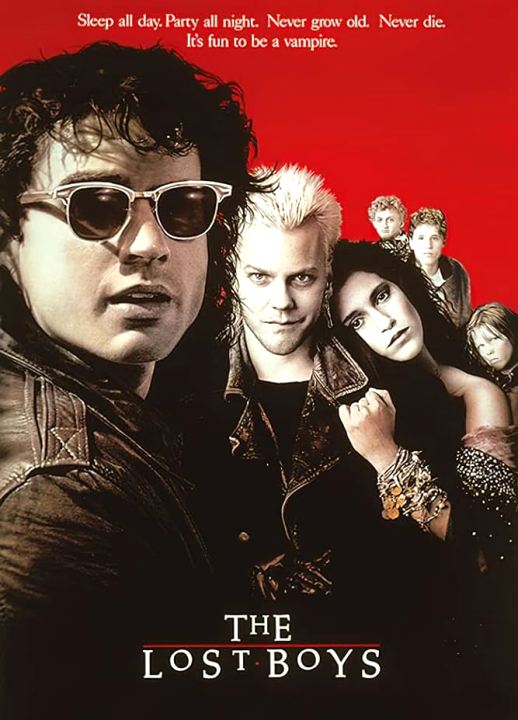
As filming began, the comedic points in the movie were made up on the spot. The comedy confused Warner Brothers, and they would ask Joel Schumacher (the director) if he were making a horror film or a comedy. He responded with “yes” every time. The executives seemed confused about the combination of those two genres, and weren’t sure that a horror-comedy would work. The city of Santa Cruz, California, did not want to be connected to the crime that happens in the movie, so they asked the production to change the name of the town in the film. So the movie takes place in the fictional city of Santa Carla.
See movie trivia about The Lost Boys HERE
FIVE
ALIEN (1979)
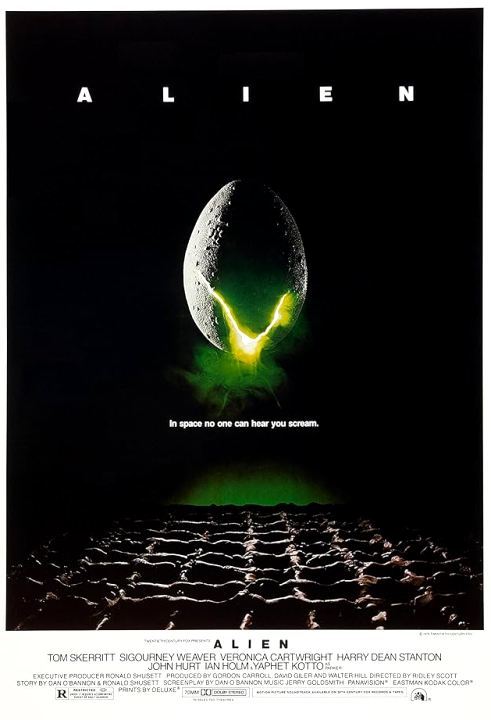
Certainly the character of Ripley, played by Sigouney Weaver, would have appealed to readers in the Golden Age of Science Fiction. She has little interest in her employer's orders that it be brought back home as a potential weapon. After she sees what it can do, her response to Special Order 24 (Return alien lifeform, all other priorities rescinded) is: "How do we kill it?"
The blue laser lights that were used in the alien ship's egg chamber were borrowed from the rock band The Who. The band was testing out the lasers for their stage show in the soundstage next door.
SIX
HELLRAISER (1987)
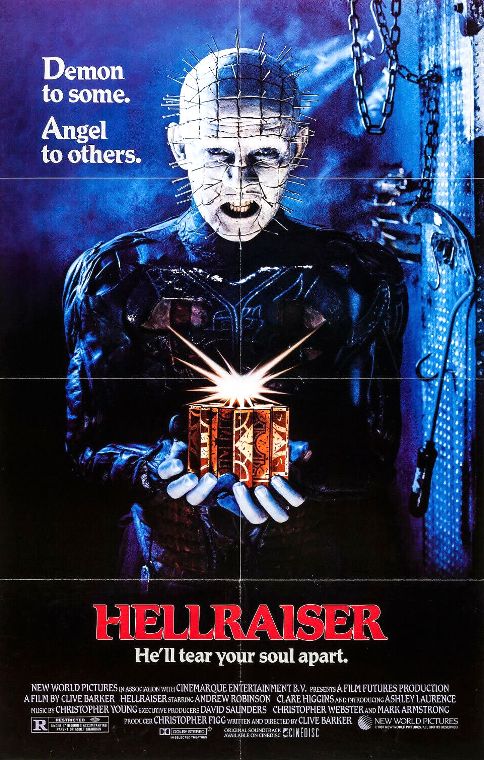
Based on the Clive Barker book titled The Hellbound Heart, Hellraiser was an orignal film in an era of cliches. Famous critic Roger Ebert panned it HERE, but moviegoers loved it. The movie was originally going to be called Sadomasochists from Beyond the Grave or Hellbound, but producer Christopher Figg suggested Hellraiser instead.
Since the movie was filmed in England, there was a law that stated that cockroaches of both sexes were not to be allowed on movie sets because they could cause an infestation. So, Barker decided to hire someone who could manage the cockroaches. He explained, “They were all male. And we had a fridge…we chilled the maggots and the roaches.”
SEVEN
THE FLY (1986)
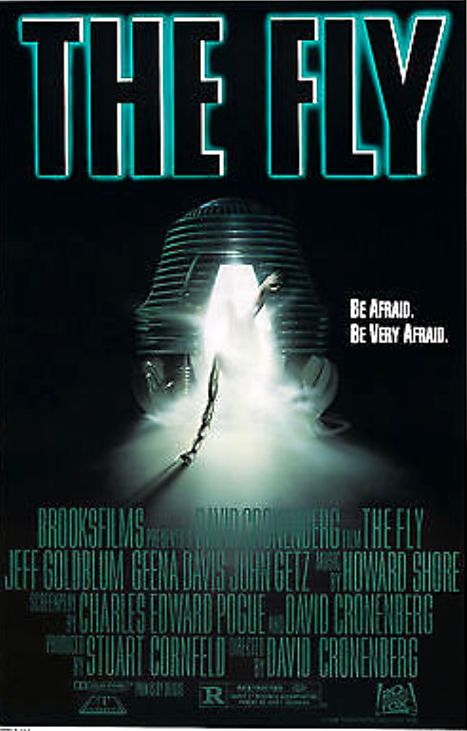
Directed by David Cronenberg and starring Jeff Goldblum early in his career, the movie is about a scientist who accidentally merges with a fly during a teleportation experiment. Although most people prefer the 1986 version because of the lead character's charm and also because the film has great heart and soul, there can't help be some comparisons to the original 1958 version.
The first The Fly (1958) was a film that surprised even its producers. They knew the original story was a little silly and expected only a modest return on the film from a mostly young audience. Even the film’s name stars, Vincent Price and Herbert Marshall, could not take The Fly seriously. The audience, on the other hand, found that there was much to respond to in the film. The Fly cost $350,000 in 1958 dollars and only took 18 days to make, yet it grossed $3,000,000 (also in 1958 dollars), considerably outstripping any expectation at the time.
EIGHT
THE HAUNTING (1963)
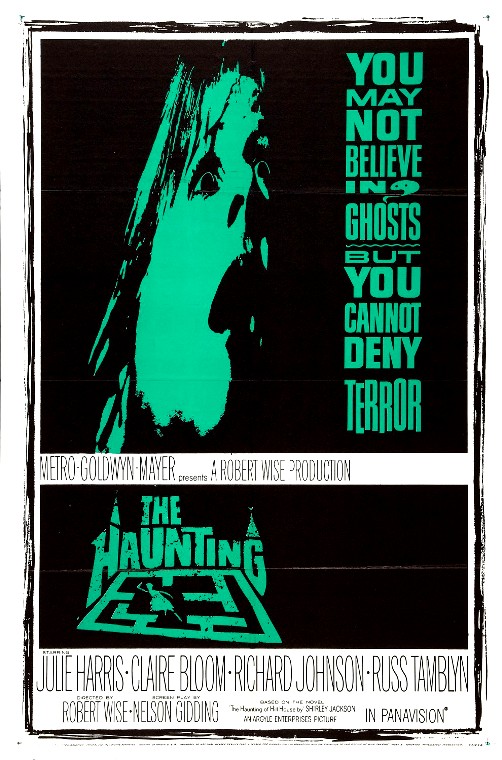
The 1963 horror film The Haunting had a budget of $1.05 million in 1958 dollars but only made $1.02 million at the box office. The film was shot at MGM-British Studios near London, with exteriors filmed at Ettington Park in Warwickshire. It was based upon Shirley Jackson's famous book The Haunting of Hill House.
At the time it was released, The Haunting was considered to be a flop because it originally lost money. But over the years, it became a classic because of word of mouth and because of TV showings. There were some clever uses of lensing effects to heighten the strangeness of Hill House. By adjusting the props in the sets so that they are off by a few degrees, it helped to unsettle the viewer.
NINE
FRANKENSTEIN (1931)

Frankenstein is a Pre-Code film. Pre-Code movies are American films produced between the late 1920s and mid-1934, before the Motion Picture Production Code (Hays Code) censorship guidelines were strictly enforced. The term "pre-Code" is a misnomer because the Hays Code was adopted in 1930, but Hollywood filmmakers often ignored it, and oversight was poor until July 1, 1934. Before then, local laws, negotiations between studios, and popular opinion had more influence on movie content.
Universal Pictures exists today because of the monster movies. In 1930, Universal lost $2.2 million in revenues (over $36 million adjusted for inflation). Then, in February 1931, Dracula was released and made $700,000 (1931 dollars) in sales. It was clear to Universal producer Carl Laemmle Jr. that horror movies were what the public wanted. By November of that same year, Frankenstein was released. Bela Lugosi, who had shot to stardom at the studio following Dracula, assumed he would be playing the Monster. However, makeup tests showed the actor didn’t have the right look. Instead, the studio went with English actor Boris Karloff, and the rest is history.
TEN
28 DAYS LATER (2002 UK, 2003 USA)

28 Days Later took the traditional zombie movie horror formula and gave it a fresh coat of paint by changing the location, the tone, and of course, the monster in question. To properly give the feeling of a dead Britain shrouded in chaos, the filmmakers had to be careful with how and when they shot. Shots on the M1 motorway were done early in the morning between 7 and 9 AM under police guidance.
A real hospital was used for the filming to create a sense of authenticity. The hospital in question was open during the week but shut on weekends which allowed Danny Boyle and his crew to rent the space for shooting when nobody was around.
An extra benefit of this arrangement was that rental fees went directly towards the hospital's trust fund, representing one of the best kinds of business transactions one could wish for. Nothing like shooting a bloody horror movie and having a portion of the budget go towards a good cause.
See more HERE
ELEVEN
NIGHT OF THE LIVING DEAD (1968)
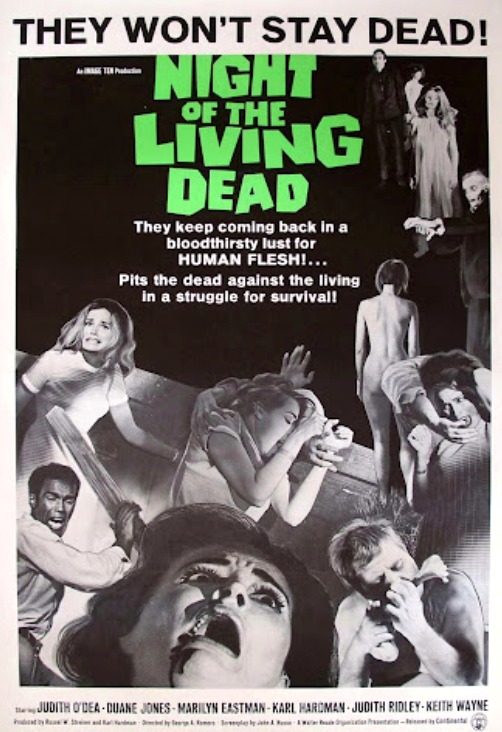
Written by George Romero and John Russo, Night of the Living Dead only had a $114,000 budget. It changed the movie world of how zombies were portrayed by using dissociation. Since the film was shot in black and white and had a really low budget, the crew never had to worry what color the blood was, so chocolate syrup was used. For the scene in which Karen Cooper (Kyra Schon) begins eating her father’s corpse, the crew’s leftover lunch was employed.
Both Romero and Russo played cameos in the film. Russo played one of the ghouls who managed to reach into the farmhouse only to be struck with a tire iron, while Romero can be seen in the Washington D.C. sequences as a reporter.
TWELVE
THE SHINING (1980)
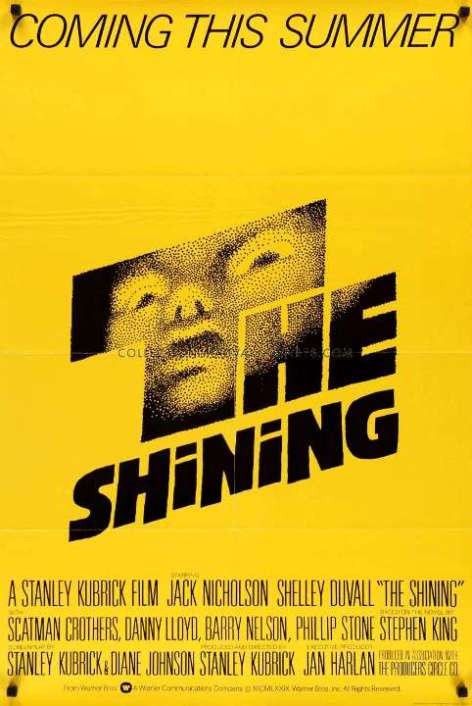
Directed by Stanley Kubrick, it is widely known that this movie is not loved by its creator, Stephen King. But not many know why. According to David Hughes, one of Kubrick’s biographers, Stephen King wrote an entire draft of a screenplay for The Shining. However, Kubrick didn’t even deem it worth a glance, which sort of makes sense when you consider that the director once described King’s writing as “weak.” Instead, Kubrick worked with Diane Johnson on the screenplay because he was a fan of her book, The Shadow Knows. The two ended up spending eleven weeks working on the script and ignoring King's version.
THIRTEEN
PHANTASM (1979)
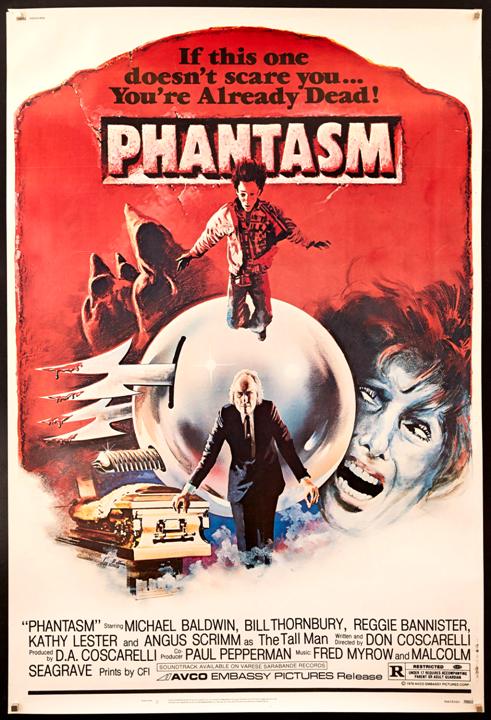
Phantasm (released as Never Dead in Australia) is a low-budget cult classic horror film produced in 1977 and released in 1979. The film was originally rated X by the MPAA because of the silver sphere sequence, and due to a scene involving a man urinating on the floor after going down dead. After Los Angeles Times film critic Charles Champlin made a telephone call in a favor to a friend on the board, the rating was changed from the (commercially non-viable) X-rating to R.
This movie was number 25 on the cable and streaming channel Bravo's list of the "100 Scariest Movie Moments."
FOURTEEN
THE EXORCIST (1973)
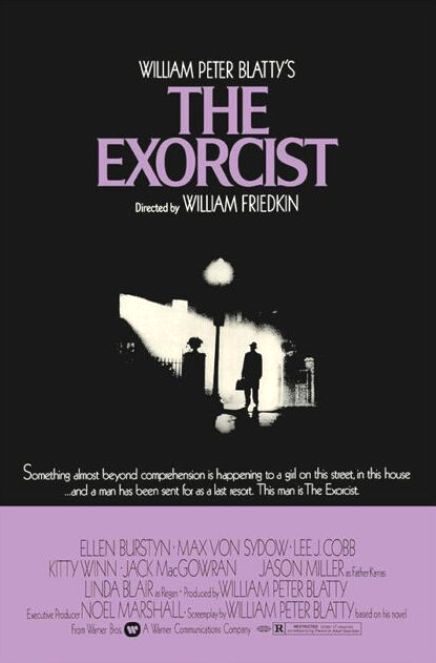
William Peter Blatty’s novel is supposedly based on the real-life 1949 exorcism of a young boy, known by the pseudonym Roland Doe. The story became national news, and caught the interest of Blatty, who was a student at Georgetown University at the time (hence the change in location). For the 1973 movie The Exorcist, the possessed child was changed to that of a girl.
Though it’s never stated in the film, the demon that takes possession of Regan MacNeil has a name: Pazuzu, which is taken from the name of the king of the demons in Assyrian and Babylonian mythology. Much of Regan’s moaning and grunting were created by remixing pig squeals. When the demon is finally exorcised from her body, the sound you hear is a group of pigs being led to slaughter.
FIFTEEN
CARNIVAL OF SOULS (1963)
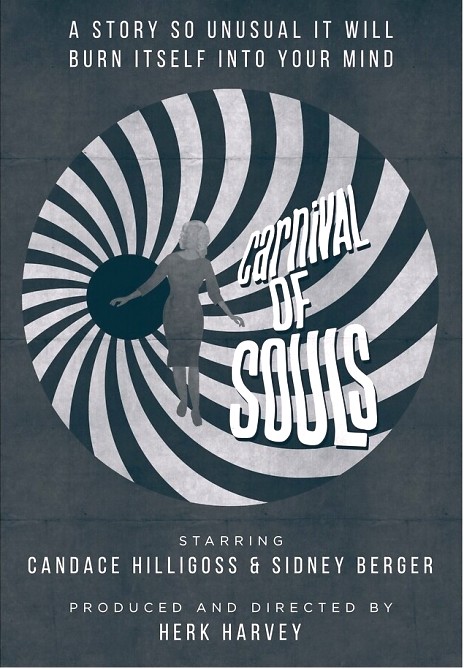
Amateurish in many ways (the film does include some stilted performances, bad lip-synching, clunky editing and a few continuity errors), Carnival of Souls nevertheless continues to exert a strange fascination for many viewers. Not a conventional horror or ghost story, this film explores the psychological state of Mary Henry after a car accident as she emerges from the murky depths of a river.
Carnival of Souls was the only feature film to be directed by industrial and educational filmmaker Harold (Herk) Harvey. After completing Carnival of Souls, Harvey was to return to making industrial and educational films before retiring in the late 1980s (he died in 1996). Assembling a crew of just five – himself, cinematographer Maurice Prather, editor Dan Palmquist, assistant director Reza Badiyi, and production manager Larry Sneegas (all of them his buddies at Centron), Harvey managed to generate a budget of $33,000 after approaching local Kansas businessmen, who invested in packs of the production’s stock. He found his lead in the form of up-and-coming actress Candace Hilligoss, who turned down a role in Psychomania (1963) to star in Carnival Of Souls. “I was paid $2,000 for doing the film,” she later recalled. “At the time, it seemed like a fortune.”
SIXTEEN
TRAIN TO BUSAN (2016)
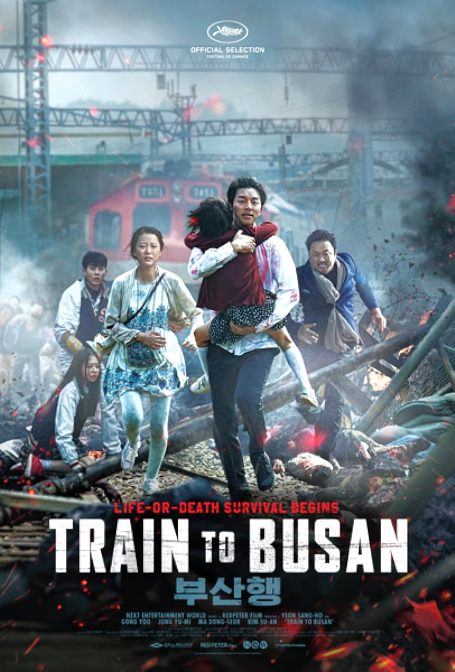
Roger Ebert called Train to Busan "a wildly fun action movie, beautifully paced and constructed, with just the right amount of character and horror. In many ways, it’s what World War Z should have been—a nightmarish vision of the end of the world, and a provocation to ask ourselves what it is that really makes us human in the first place."
Filming began in April 2015 and finished in August 2015, for a total of only four months. The movie is based on an original story created by Park Joo-suk. The film team tried to reference the movements of the zombies from the game 7 Days to Die, and also from the movies Ghost in the Shell and Silent Hill.
Train to Busan received a 94% rating from Rotten Tomatoes, and British filmmaker Edgar Wright, director of the zombie comedy Shaun of the Dead, highly applauded the film. He personally recommended it on Twitter and called it the "best zombie movie I've seen in forever."
SEVENTEEN
ROSEMARY'S BABY (1968)
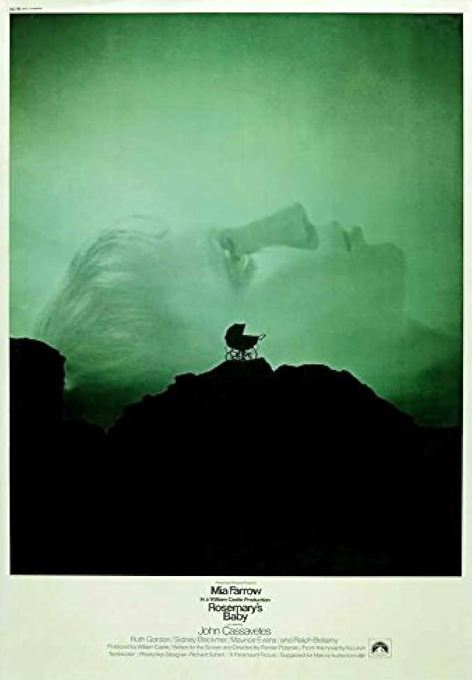
This wildly entertaining nightmare, faithfully adapted from Ira Levin's best seller, stars Mia Farrow as a young mother-to-be who grows increasingly suspicious that her overfriendly elderly neighbors are in a pact with Satan. With a comparatively small budget of just $3.2 million (1968 dollars), Rosemary’s Baby grossed over $33 million worldwide upon its release, making it by far the most commercially successful of Polanski’s ‘Apartment Trilogy’ films.
According to Mia Farrow, the scenes where Rosemary walks in front of traffic were spontaneous and genuine. Director Roman Polanski is reported to have told her that "nobody will hit a pregnant woman." The scene was successfully shot with Farrow walking into real traffic and Polanski following, operating the hand-held camera since he was the only one willing to do it.
EIGHTEEN
RE-ANIMATOR (1985)

Re-Animator (also known as H. P. Lovecraft's Re-Animator) is a 1985 American comedy horror film that is loosely based upon the 1922 H.P Lovecraft serial novelette titled Herbert West: Reanimator. Originally devised by director Stuart Gordon as a theatrical stage production and later a half-hour television pilot, the television script was revised to become a feature film. Filmed in Hollywood, the film received an R Rating at the box office, but it garnered its largest audience through the unrated cut's release on home video.
The special effects department went through twenty-four gallons of fake blood during the shoot, and makeup effects artist John Naulin said that Re-Animator was the bloodiest film he had ever worked on. In the past, he had never used more than two gallons of blood on a film. The building used for the Miskatonic Medical School is the same one as the Cyberdine Headquarters in Terminator 2: Judgement Day.
NINETEEN
PSYCHO (1960)
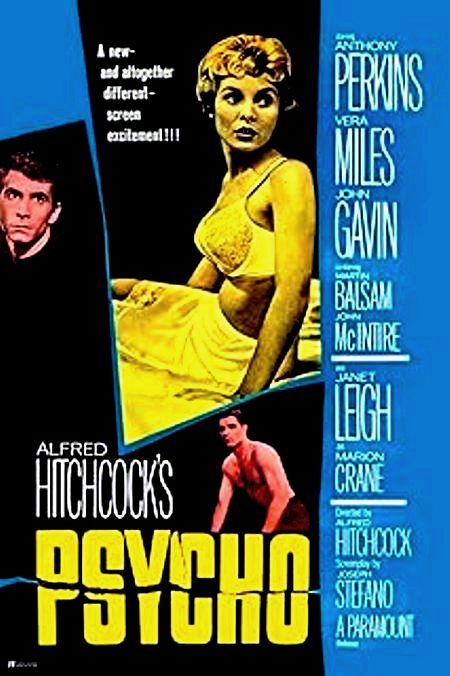
Psycho was seen as a departure from Hitchcock's previous film North by Northwest since it was filmed on a small budget in black-and-white by the crew of his then-television series Alfred Hitchcock Presents. Initially, the film divided critics due to its controversial subject matter, but audience interest and outstanding box-office returns prompted a major critical re-evaluation. Psycho was nominated for four Academy Awards, including Best Director for Alfred Hitchcock and Best Supporting Actress for Janet Leigh.
When the cast and crew began work on the first day, they had to raise their right hands and swear an oath not to divulge one word of the story. Hitchcock also withheld the ending part of the script from his cast until he needed to shoot it.
TWENTY
NOSFERATU (1922 Germany, 1929 USA)
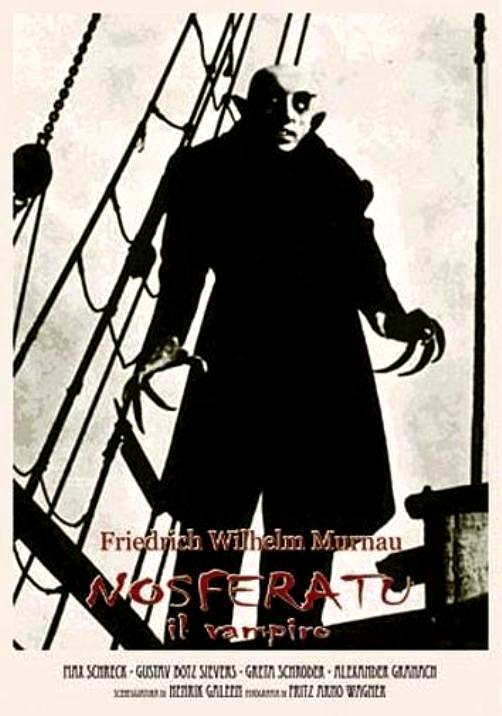
Nosferatu, also known as Nosferatu: A Symphony of Horror (German: Nosferatu – Eine Symphonie des Grauens) is a 1922 silent German Expressionist vampire film directed by F.W. Murnau and starring Max Schreck as Count Orlock. Even with several details altered, Bram Stoker's heirs sued over the adaptation, and a court ruling ordered all copies of the film to be destroyed. However, several prints of Nosferatu survived, and would resurface through second-generation reels. The movie was banned in Sweden due to excessive horror. The ban was finally lifted in 1972.
The vampire's unblinking stare was central to the unnerving effect the creature cause for audiences. Count Orlok is only seen blinking once on screen, near the end of Act One.
Today, the film is regarded as an influential masterpiece of early cinema and the horror genre, as reported by Deadline. That’s Friday the 13th.

Jeani Rector’s Advice on Writing is a folksy, easy to comprehend step-by-step process that covers in detail such techniques as character development; substance, structure and style; pacing suspense; suggestions about promoting your work and other valuable information.
What makes an editor choose one story over another for publication? What are the secrets to make your work stand out from the pack? How can you bring out the best in your potential? This book shares insider information to help you succeed in the competitive world of writing.
It is on sale for a low price of $8.99 paperback and $2.99 kindle HERE

THE HORROR ZINE IS PUBLISHING BOOK REVIEWS
The Horror Zine welcomes book review requests.
To learn how to submit your book for review, go HERE.

Did you know that BloodyDisgusting has a horror forum? Post your thoughts about horror HERE

Take the Plague Quiz HERE
Would you survive the bubonic plague? Find out HERE

|